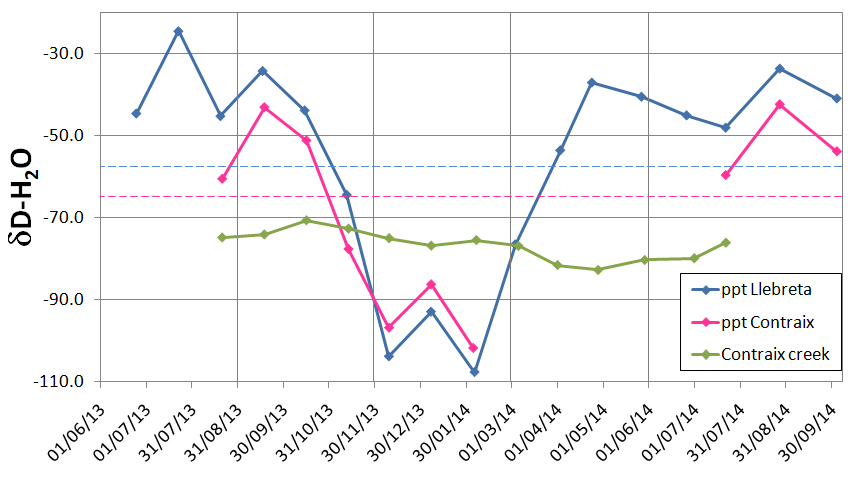Subproject 2: the importance of the underground water cycling
In recent years, the notion known as the ‘old water paradox’ has gained strength: in headwaters catchments, stream discharge responds in minutes to hours to the storms, but runoff water is aged months to years.
The explanation to this paradox is that underground water has a weight in the runoff generation more important than expected so far. The underground and surface hydrological processes must be more closely connected than assumed, and the catchments respond to a precipitation event putting into circulation old water stored in the underground hydric compartments. In previous studies, we have found evidence of this in alpine catchments in the Aigüestortes National Park. Using water isotopes measurements in streams at elevations between 1,600 and 2,000 m asl, we have estimated the mean water renewal time in the catchment to be between 8 and 15 months. So that, the flowing water that feeds the lakes has had a long residence time and, therefore, it may have been submitted to a long biogeochemical processing, mostly during its transit through the underground compartments.
 |
|
Mean water renewal time estimated from isotopes. The plots show the deuterium (D) content expressed as δD in atmospheric precipitation collected in the weather stations near lakes Llebreta (1,600 m asl; blue line) and Contraix (2,600 m asl; pink) and in the stream draining the Contraix catchment (2,000 m asl; green), all in the Sant Nicolau river valley (N.P. Aigüestortes). The broken lines represent the average for precipitation in both stations. The amplitude in the fluctuation is much lower in the stream than in precipitation, which is consistent with a water residence time in the catchment of around one year. |
Despite its potential importance, little is still known about the underground hydrological functioning in alpine catchments. Studies dealing with this topic are scarce. In particular, there is a need of field studies comprising all the components of the hydrological cycle including underground fluxes, allowing to see how the different hydrological units are connected to each other. This is the general aim of the TRANSFER subproject 2, with a view to understand how the underground cycling modulates the transmission of the atmospheric forcing through the catchment to streams and lakes. The specific objectives are 1) to quantify the actual influence of underground water on the runoff amount and chemistry, and 2) to estimate the rate of the underground biogeochemical processes affecting the nutrients that are ultimately delivered to the lakes.
posted 13/02/2018
